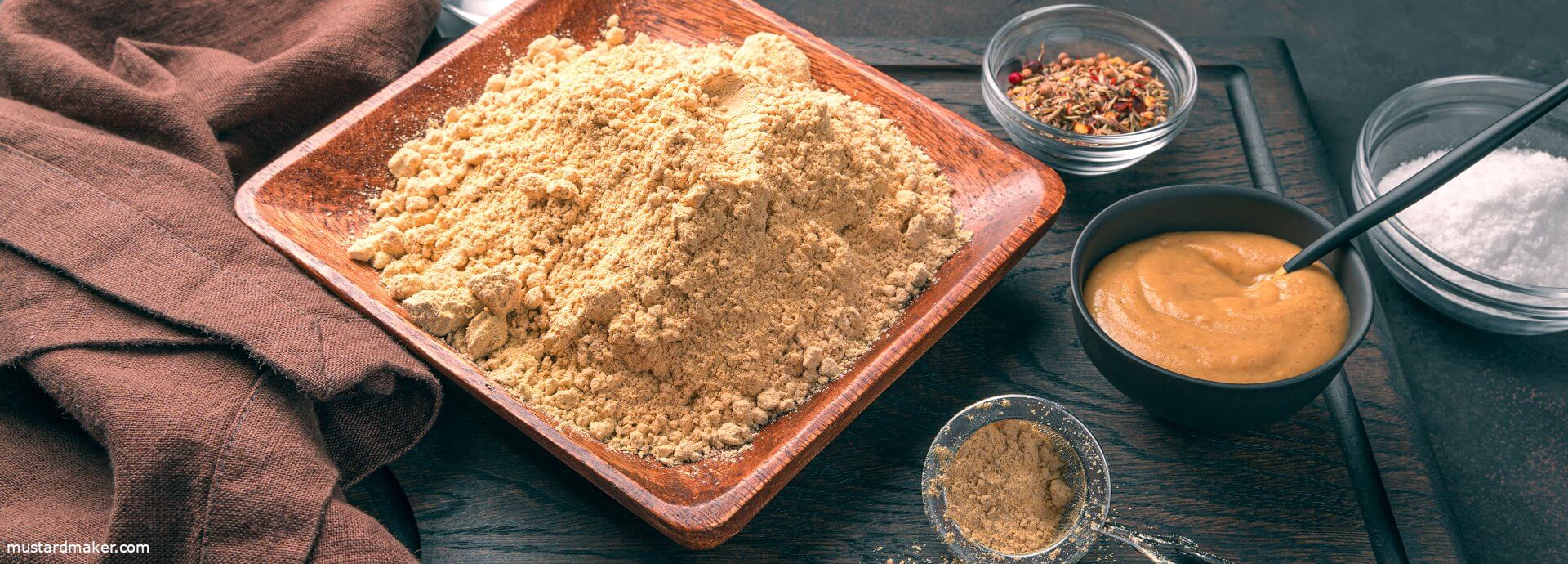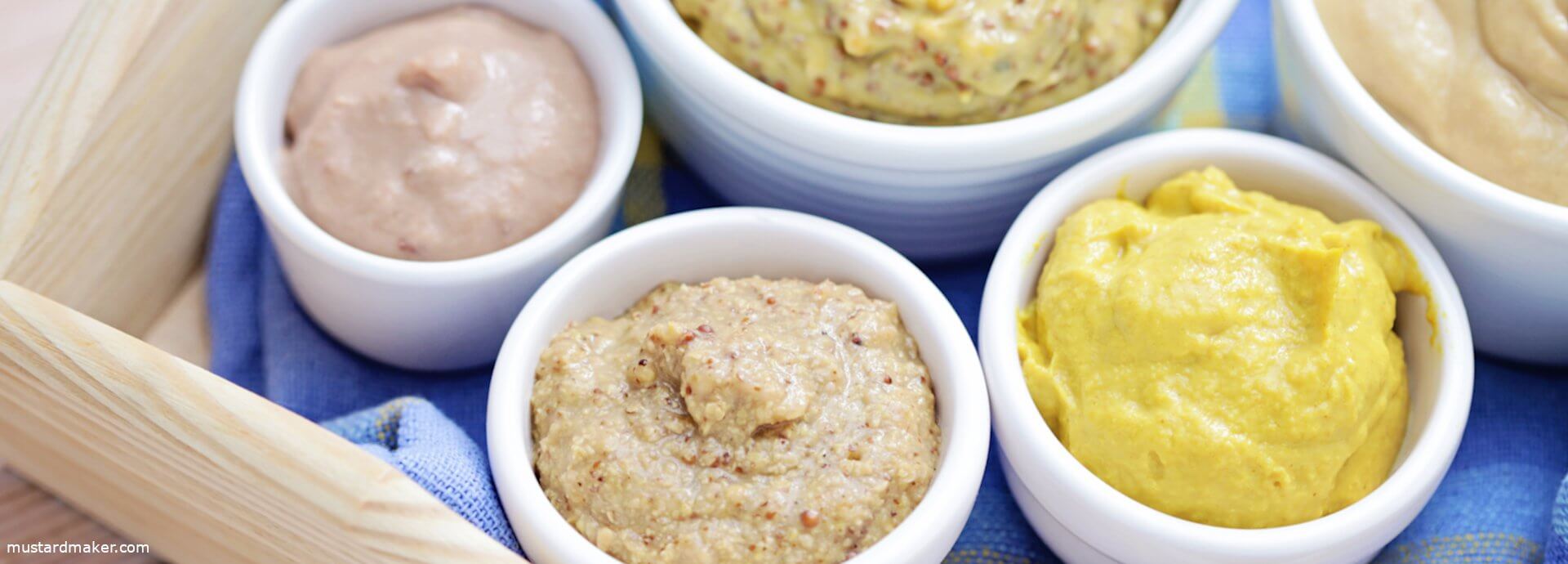Make mustard yourself
Mustard is made from the seeds of the mustard plant. Mustard made from yellow mustard seeds is milder than mustard made from brown or black mustard seeds. While all mustard seeds still taste mild, the addition of liquid develops the pungency.

Table of Contents
For mild mustard, white or yellow mustard seeds are used. Medium hot mustard is made by mixing white and brown mustard seeds. Hot mustard is made exclusively from brown and black mustard seeds. The origin for all mustard is mustard flour, which when mixed with water becomes mustard paste.
Mustard flour
Ready-made mustard flour from the trade can be mixed with a wide variety of ingredients. If you want to be on the safe side when making mustard, make your own mustard flour from mustard seeds. To do this, in addition to organic quality mustard seeds, you will need a mortar or grinder manual or electric. The mortar and the manual coffee grinder have the advantage that the mustard seeds heat up less during grinding. All the important ingredients and also the mustard oils, which later provide the pungency, are retained. A temperature of 30 °C should not be exceeded during electric grinding. Nevertheless, you have to reckon with a grinding time of around five minutes. It helps a lot if the mustard seeds are cooled beforehand and a break is taken now and then during electric grinding. Mustard made from mustard flour from a mortar and manual hand mill will not be as fine later as mustard from a tube. For fine mustard flour, an electric spice grinder or coffee grinder is needed. It is important in the production of mustard flour that no peel residues are found in the later mustard. For this purpose, the finished mustard paste can be reworked with a blender if necessary. Mustard flour mixed with water makes mustard paste.
Mustard flour is a popular seasoning in the kitchen. It can be sprinkled in sauces, dressings and dips, and it gives a new flavor component to fried food.
Use mustard paste
If you add ingredients other than water to the mustard flour, the result is edible mustard. The pure mustard paste made from mustard flour and water can already be used for health applications for poultices or compresses. Areas of application range from bronchitis to joint pain in osteoarthritis and soft tissue rheumatism, headaches and nerve pain to a warming mustard foot bath, because mustard has a circulation-promoting skin-irritating effect. Mustard internally acts on indigestion and is used for heartburn. However, because heartburn can also intensify and irritate a sensitive stomach, internal use should always be tried carefully first.
For a mustard foot bath, add between 10 g and 30 g of black mustard flour to 38 °C hot water. The water level should reach to the middle of the calves. The duration of the bath is between 2-10 minutes. The skin will start to burn. After the mustard foot bath, rinse the wet area thoroughly with clean water and nourish the skin by applying olive oil. Put your legs up for half an hour to an hour.
For a mustard compress, spread the mustard paste 2 cm thick on a kitchen towel or cotton cloth and wrap it. Place the compress on the area to be treated and cover it with a towel. As soon as the skin starts to burn, remove the compress, wash the skin damp and rub it with olive oil. The application time is from 1 minute to 3 minutes when applied for the first time. Later, the duration can be increased up to 10 minutes. If the mustard paste is not only applied as a compress, but wrapped around the body part, it is called a mustard poultice.

Mustard basic recipe
A simple mustard basic recipe is ready in 15 to 20 minutes. However, the mustard flour must ferment with the ingredients for at least one day. It is important that air gets to the mustard so that the fermentation starts. Once the mustard is ready, it can be mixed again with a blender for a better consistency before the mustard is filled into sealable containers made of glass, earthenware or clay. Now the mustard must steep for at least two more weeks to develop its flavor. If mustard is made from mustard seeds, they must be soaked in a liquid for a long time before processing.
Mustard recipes
Each mustard recipe requires the preparationto follow the exact order. This is different for sweet mustard than for Frankfurt mustard and the preparation of English mustard is different from Dijon mustards. Normal mustard is already made from a few ingredients that are available in the supermarket. You need mustard seeds, salt, sugar and a high-quality vinegar with at least 5 percent acetic acid. For mustard variations with other flavor components, add other ingredients such as spices, herbs and fruits. If you don’t have an ingredient on hand, use an alternative with a similar effect. Instead of regular salt, you can use smoked salt, Himalayan salt or sea salt. Sweetness can also be created with honey or agave syrup instead of sugar. Mustard without sugar is also possible, since the vinegar serves as a preservative.
Why make mustard yourself?
Industrial mustard is not subject to any ripening process. It is stabilized with antioxidants and preservatives so that its taste is always the same. At home, the mustard is allowed to ripen for two weeks or more in a cool and dark place. The pungency of the mustard seed is lost during industrial processing. Therefore, horseradish and chili are used to make mustard spicier again. You will already notice the difference between industrial mustard and mustard made according to traditional production methods when you compare industrial mustard and mustard from a mustard mill. The difference in taste is even greater with home-made mustard. So it’s worth trying it out.